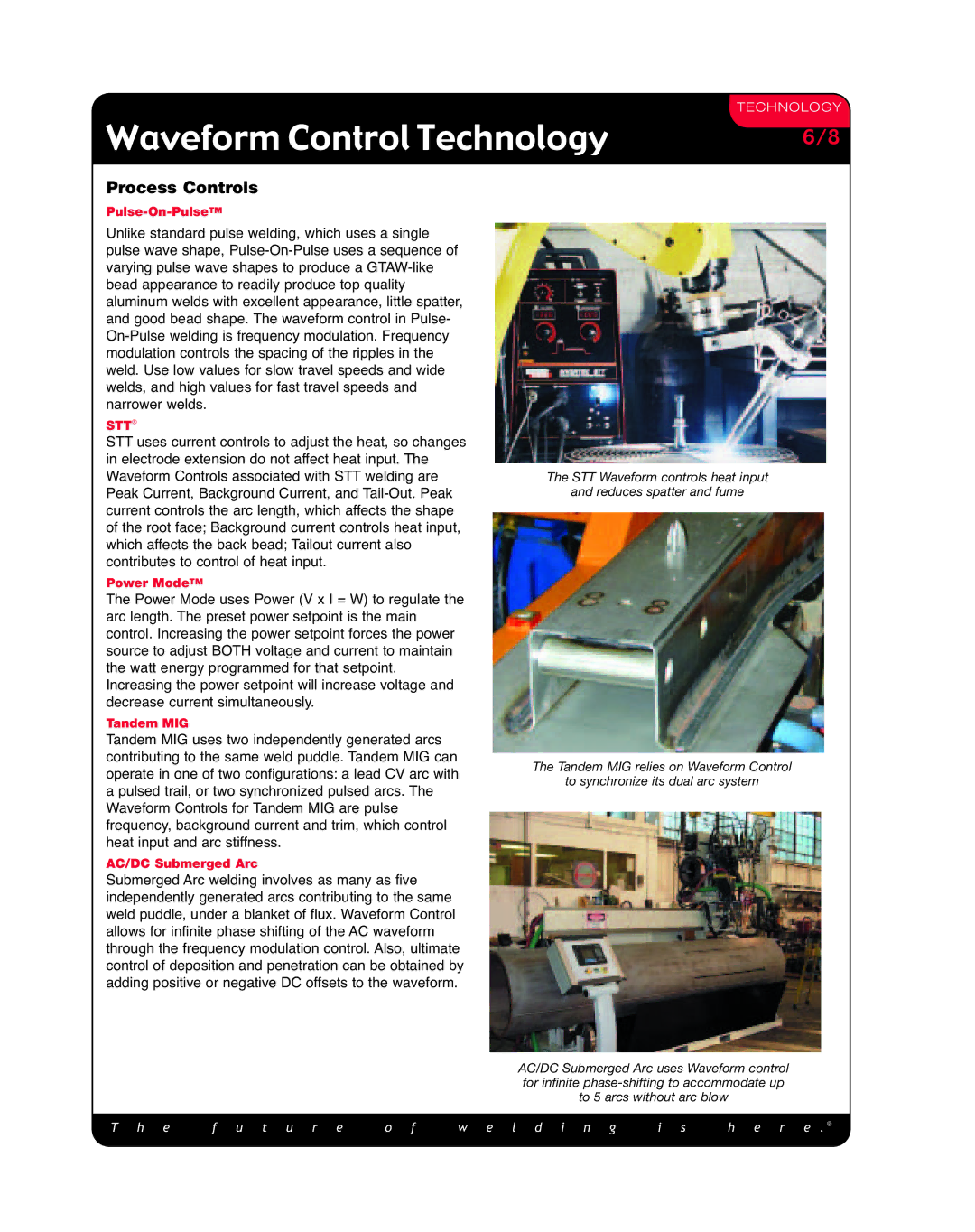
| TECHNOLOGY |
Waveform Control Technology | 6/8 |
Process Controls
Unlike standard pulse welding, which uses a single pulse wave shape,
STT®
STT uses current controls to adjust the heat, so changes in electrode extension do not affect heat input. The Waveform Controls associated with STT welding are Peak Current, Background Current, and
Power ModeTM
The Power Mode uses Power (V x I = W) to regulate the arc length. The preset power setpoint is the main control. Increasing the power setpoint forces the power source to adjust BOTH voltage and current to maintain the watt energy programmed for that setpoint. Increasing the power setpoint will increase voltage and decrease current simultaneously.
Tandem MIG
Tandem MIG uses two independently generated arcs contributing to the same weld puddle. Tandem MIG can operate in one of two configurations: a lead CV arc with a pulsed trail, or two synchronized pulsed arcs. The Waveform Controls for Tandem MIG are pulse frequency, background current and trim, which control heat input and arc stiffness.
AC/DC Submerged Arc
Submerged Arc welding involves as many as five independently generated arcs contributing to the same weld puddle, under a blanket of flux. Waveform Control allows for infinite phase shifting of the AC waveform through the frequency modulation control. Also, ultimate control of deposition and penetration can be obtained by adding positive or negative DC offsets to the waveform.
The STT Waveform controls heat input
and reduces spatter and fume
The Tandem MIG relies on Waveform Control
to synchronize its dual arc system
AC/DC Submerged Arc uses Waveform control for infinite
| T h e | f u t u r e | o f | w e l d i n g | i s | h e r e . ® |
|
|
|
|
|
|
|
|
|
|
|
|
|
|
